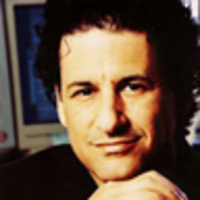Walter Becker, co-founder with Donald Fagen of rock band Steely Dan and co-writer of the Steely Dan oeuvre, died on Sunday at age 67. Like many people, I first heard Steely Dan on the radio in 1972 and early 1973 with their song “Do It Again,” now a classic rock staple. It was an unlikely hit, with its harmony based in ancient Greek modes and its lazy tempo. The band sounded strange to me, unworldly, and entirely like anything else I had ever heard before. By the time their second album came out, I was hooked on what I find to be some of the most inventive songs of the last hundred years.
The songs that Walter wrote with Donald are masterpieces of intelligence, wry observation, and occasional doomsday cynicism that befits a band named after a character in a William S. Burroughs novel. The lyrics were always rich in poetic imagery and at the same time, frequently opaque and cryptic—they knew what they were writing about in great detail and the rest of us could only guess. They were masters of phrases that stick in your head, both lyrically and musically.
Across a 45 year career, Steely Dan never sounded like anyone else and, tellingly, no one else ever sounded like them. The reason there aren’t Steely Dan sound-alike bands, or for that matter, covers of Steely Dan songs, is that the Steely Dan sound is fiendishly, devilishly hard to recreate. It relies on virtuosic performances, tight, intricate arrangements, a merging of jazz, R&B, blues, and rock, and the superlative phrasing of vocalist Donald. Take away any one of those elements, even in small measure, and you lose the essence. Indeed, the current touring band comprises a highly selected, elite group of the most virtuosic, soulful players in the world.
Walter died at his home in Maui. It was a magnificent place, above the Pacific Ocean, with a pristine state-of-the-art studio befitting one of the music’s most dedicated audiophiles. He was always looking for new and interesting sounds, and better ways to record and reproduce them.
In 1972, he questioned the prevailing recording studio wisdom of adding equalization, sometimes painstakingly, to every instrument in the studio. That seemed unnatural to him. Why not let the instruments come through with the natural frequencies they produce without artificial enhancement? The result was a grand sonic experiment, an entire album recorded without EQ and the results were the superb Countdown to Ecstasy.
In an effort to hear more detail and nuance during recording and mixing sessions, he discovered Magneplanar and Quad electrostatic speakers, renowned for their clarity but also for their lack of ability to produce low frequency sounds. As a bass player, this was particularly troubling for Walter. He convinced Ken Kreisel, an inventor, to come up with a way to improve this. Ken brought a prototype of a subwoofer to the studio and Steely Dan used it for their 1974 album Pretzel Logic.
The subwoofer was such a success that everyone in the band wanted one, and Kreisel (with Jonas Miller) launched the M&K Speaker Corporation to market them, the very first subwoofer commercially produced. It was in this context that I first met Walter. I had been hired as a consultant by M&K to help in the redesign of the subwoofer’s crossover network (the electronic circuitry that distributes the different frequencies of sound to the subwoofer and the main loudspeakers). I found him to be engaged and enthusiastic, and blisteringly smart.
I also discovered Walter to be one of the most generous people I have ever worked for. In 1992 I played a small, technical role in the remastering of the Steely Dan catalog for CD, working alongside longtime engineer Roger Nichols to identify by listening carefully which were the correct master tapes (there had been some tape storage and mislabeling problems that caused the first run of CDs released to be made from the incorrect tapes, second and third generation copies). Walter went out of his way to make sure that I received credit for this work.
As Walter and Donald were searching for better recording technology, they were also seeking a greater perfection in delivering their musical vision. The idea of a conventional band with fixed membership was antithetical to being able to create a repertoire of music that pushed at the boundaries of popular music. Even the Beatles had to bring in outside musicians (Eric Clapton, Billy Preston) to achieve their songwriting visions.
And so gradually, the only constants in Steely Dan were Walter & Donald, who brought in musicians for a very particular and explicit purpose. For one song, they would bring in Bernard Purdie whose drumming fit the feel of that song perfectly; for another they’d bring in Steve Gadd, for another Jim Keltner, a who’s who of the top drummers in the world.
A large and unheralded part of their genius was knowing which musicians to call for which parts and which songs. And then, to top it off, in their later years when they started touring, Walter & Donald managed to find musicians whose musicality and versatility allowed them to emulate the feel of the great musicians who had played on the recordings. Drummer Keith Carlock, guitarist Jon Herington, the saxophonists Roger Rosenberg and Walt Weiskopf, and the rest of the ensemble, could channel the sounds of the musicians who created those iconic parts on record, while maintaining their own distinctiveness. This is of course what many touring bands attempt to pull off, but no one has done it as well as Steely Dan.






